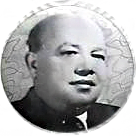





Abdel-Rahman, Ansam S. and Tolba, Hager I. ( 2016). Possibility of improving growth, yield and bunch quality of Ruby Seedless grapevines through the application of yeast and summer pruning practiceNature and Science, 14(2): 97-106.
Abstract: This investigation was conducted for two successive seasons (2014 and 2015) in a private vineyard located at 58 km Cairo-Alex desert road to find out the effect the application of yeast and summer pruning practice on growth, yield and bunch quality of Ruby Seedless grapevines. The chosen vines were eight-year-old, grown in a sandy loam soil, spaced at 2 X 2.75 meters apart and irrigated by the drip irrigation system. The vines were spur-pruned, trained to the bilateral cordon and trellised according to the "T" shape system. Two doses (10 or 20 L/ fed) of Saccharomyces cerevisiae and Candida tropicalis were soil drench applied at three application dates: the 1st date (after bud burst), the 2nd date (after shattering) and the 3rd date (4 weeks after shattering). In addition to, summer pruning was applied included pinching the main shoots before the beginning of bloom and maintaining laterals accompanied with defoliation at veraison stage. The results showed that, the inoculation Saccharomyces cerevisiae at a rate of 20 L/fed + summer pruning treatment, followed by inoculation with Candida tropicalis (20 L/fed) + summer pruning treatment gave the optimum results in comparison with control in both seasons. With respect to microbiological activity in the rhizosphere, it was noticed that the inoculation with Saccharomyces cerevisiae and Candida tropicalis succeeded to increases the population density of total bacterial and yeast. In addition to increase dehydrogenase enzyme activity and CO2 evolution in the rhizosphere. Both of treatments resulted in the best yield and its components as well as the best physical properties of bunches, improved the physical and chemical characteristics of berries and ensured the best average leaf area and coefficient of wood ripening. Leaf content of total chlorophyll, cane content of total carbohydrates were also improved.
The economical study indicated that bio inoculation with Saccharomyces cerevisiae or Candida tropicalis yeasts at a rate of 20 L/fed accompanied with summer pruning of Ruby Seedless grapevines gave the highest net income as compared to the control.
Keywords: (grapevines growth, yield bunch quality Ruby Seedless grapevines yeast summer pruning practice )